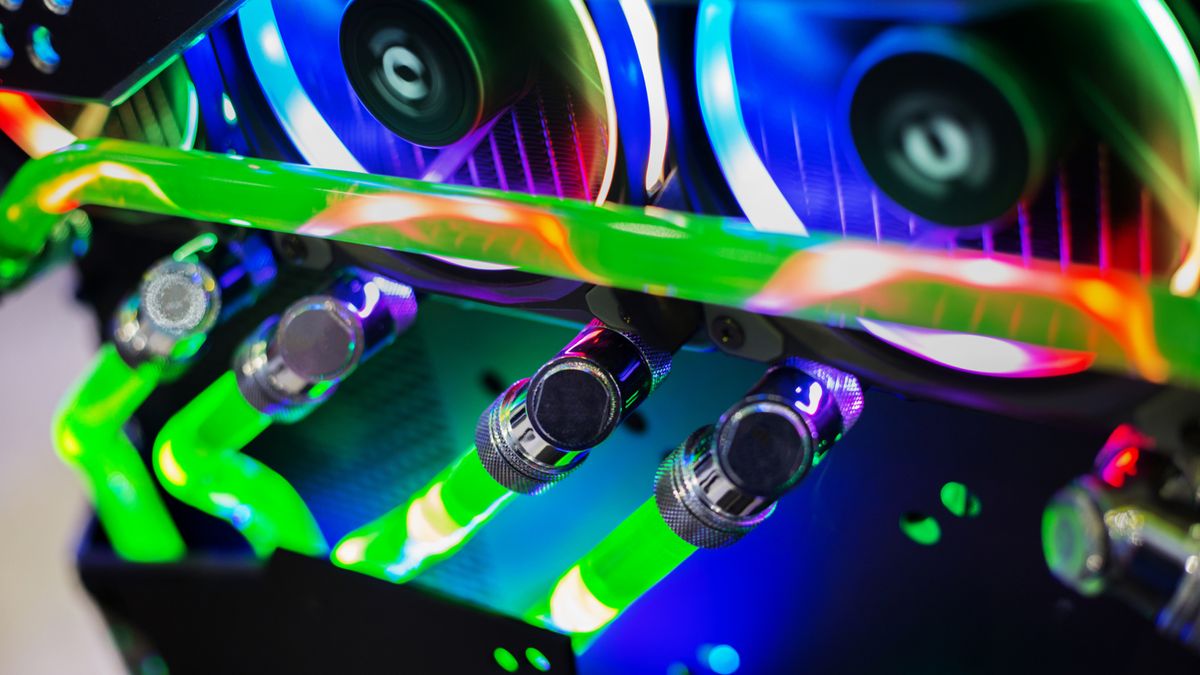Nvidia claims GPU stock should improve by second half of 2022
Just in time for the GeForce RTX 40 series

The ongoing graphics card shortage could be coming to an end, as Nvidia predicts that manufacturing and supply issues should start to see improvements in the second half of 2022.
As reported by WCCFTech, this claim was made during the 24th Annual Needham Growth Conference by Nvidia's CFO, Colette Kress, stating that "We had seen channel levels be quite lean, and we are working with our supply chain partners to increase the availability of supply. And we feel better about our supply situation as we move into the second half of the calendar year '22.".
She also drove home that the current demand for existing GeForce graphics cards massively outweighs the existing supply, saying that "even throughout all of calendar 2021, we have seen strong demand for GeForce. And it continues to remain strong and stronger than our overall supply that we have. The holiday demand, for example, was quite strong, particularly in laptops".
This lines up with the anticipated timeline for the next generation of GeForce graphics cards to be released, namely the RTX 40 series. We know nothing about it yet, or even that it will follow the same naming conventions seen up to this point. But a new generation of the GeForce family has been introduced every two years, with the Ampere-based RTX 30 series being released back in September of 2020.
As always, while this is exciting news, we shouldn't get our hopes up to avoid disappointment. Nvidia isn't the only big computing brand to predict those supply constraints should ease in 2022, with Intel and AMD having made similar predictions regarding the semiconductor shortage that's driving GPU manufacturing constraints, though we have yet to be provided an actual solution that will fix the issue – only comments stating that it'll be resolved.
Analysis: Gaming laptops are finally getting their moment
The GPU and chip shortage are nothing new, and we've been in this hardware drought for many months thanks to a dastardly mix of lowered supply thanks to Covid, plus increased demand from other industries. You can find a computer chip in anything these days, from cars to fridges and even printer ink cartridges, so competition has been fierce to buy up what available inventory is being churned out by the foundries.
One of the few ways that folks have been able to snap up some new PC gaming hardware at MSRP is to buy a gaming laptop, which appears to be unaffected by cryptomining demands and scalpers. While some stigmatize them because they're underpowered compared to a full desktop PC, that attitude appears to have left plenty of gaming laptops available on the shelves for the rest of us.
Get daily insight, inspiration and deals in your inbox
Sign up for breaking news, reviews, opinion, top tech deals, and more.
In fact, I'd wholeheartedly recommend buying an Nvidia-powered gaming laptop if you're considering jumping into PC gaming, especially if you were already in the market for a new device. They make excellent 2-in-1 machines for students and professionals who need a laptop suitable for both work and play, and thanks to tech like DLSS, there isn't much you can't run on one (even if the fan noise takes some getting used to).
Now that the RTX 3080 Ti is available as a mobile GPU, you won't be lacking in power to run even the most demanding games. And people still happily use gaming laptops with RTX 20 series and even GTX series graphics cards, so your hardware won't be irrelevant the moment mobile RTX 40 series cards appear on the market.
It isn't the ideal solution for everyone, but those who could benefit from a mobile solution shouldn't snub gaming laptops in favor of waiting for desktop hardware to become more affordable (or even just 'available').
- AMD vs Nvidia: who makes the best graphics cards?
Jess is a former TechRadar Computing writer, where she covered all aspects of Mac and PC hardware, including PC gaming and peripherals. She has been interviewed as an industry expert for the BBC, and while her educational background was in prosthetics and model-making, her true love is in tech and she has built numerous desktop computers over the last 10 years for gaming and content creation. Jess is now a journalist at The Verge.













